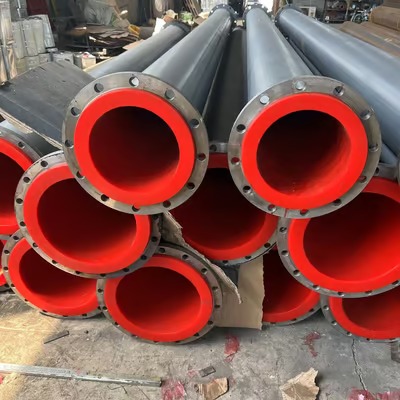Introduction
Polyurethane hydrocyclones have emerged as a vital tool in the field of slurry classification. With their ability to separate solid particles from liquids based on their specific density, these hydrocyclones play a crucial role in various industries, including mining, oil and gas, and wastewater treatment. This article delves into the world of polyurethane hydrocyclones, exploring their design, working principle, applications, advantages, and considerations for optimal performance.
Understanding Polyurethane Hydrocyclones
Polyurethane hydrocyclones, as the name suggests, are hydrocyclones made from polyurethane material. They are designed to efficiently separate solid particles from liquids in a slurry mixture. The unique properties of polyurethane, such as its high abrasion resistance, flexibility, and chemical resistance, make it an ideal material for constructing hydrocyclones that can withstand harsh operating conditions.
Working Principle of Polyurethane Hydrocyclones
The working principle of polyurethane hydrocyclones revolves around the centrifugal force generated by the slurry flow. When the slurry enters the hydrocyclone through the inlet, it is forced to rotate at high speeds, creating a vortex. The centrifugal force pushes the solid particles towards the outer wall of the hydrocyclone, while the lighter liquid phase moves towards the center and exits through the overflow outlet.
Applications of Polyurethane Hydrocyclones
Polyurethane hydrocyclones find extensive applications across various industries:
- Mining: Polyurethane hydrocyclones are used in mineral processing plants for efficient classification of ore particles, improving the overall recovery of valuable minerals.
- Oil and Gas: In the oil and gas industry, polyurethane hydrocyclones aid in the separation of oil, water, and gas, ensuring the efficient processing of crude oil and reducing environmental impact.
- Wastewater Treatment: These hydrocyclones are employed in wastewater treatment plants to remove solid particles from the water, enhancing the quality of effluent discharged into the environment.
Advantages of Using Polyurethane Hydrocyclones
Polyurethane hydrocyclones offer several advantages over alternative materials:
- High Abrasion Resistance: The exceptional abrasion resistance of polyurethane allows the hydrocyclones to withstand the wear and tear caused by the continuous flow of abrasive slurry.
- Chemical Resistance: Polyurethane hydrocyclones exhibit excellent resistance to a wide range of chemicals, ensuring their longevity even in corrosive environments.
- Flexibility: The flexibility of polyurethane enables the hydrocyclones to withstand vibrations and impacts, making them suitable for various industrial applications.
- Efficient Separation: These hydrocyclones are designed to achieve efficient separation of solid particles from liquids, leading to improved process efficiency and product quality.
Considerations for Optimal Performance
To ensure optimal performance of polyurethane hydrocyclones, certain considerations should be taken into account:
- Proper Sizing: Selecting the appropriate size of hydrocyclone based on the desired flow rate and particle size distribution is crucial for achieving efficient classification.
- Control of Operating Pressure: Maintaining the correct operating pressure within the hydrocyclone is essential for achieving the desired separation efficiency.
- Regular Maintenance: Regular inspection and maintenance of polyurethane hydrocyclones help identify any wear or damage, ensuring their longevity and consistent performance.
Conclusion
Polyurethane hydrocyclones have revolutionized the field of slurry classification with their ability to efficiently separate solid particles from liquids. Their design, working principle, and unique properties make them an indispensable tool in industries such as mining, oil and gas, and wastewater treatment. By understanding the advantages and considerations for optimal performance, industries can harness the power of polyurethane hydrocyclones to enhance efficiency, improve product quality, and minimize environmental impact.

